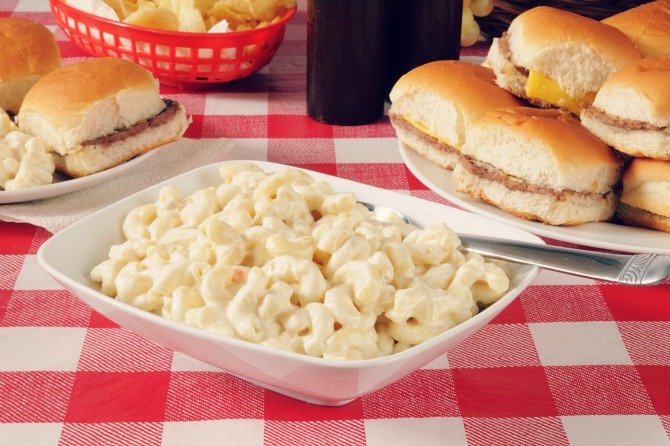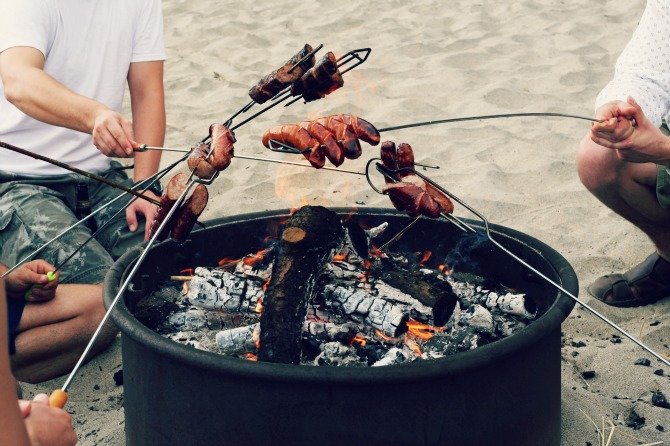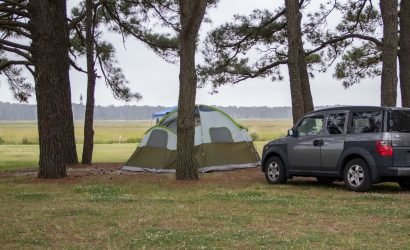 The weather is starting to warm up, filling my head with thoughts of beach days, camping trips, and summer cookouts. The mainstay of all of these activities is food. We spend so much time protecting our families from chemicals in foods and cleaners and choosing healthy options for them, but we sometimes forget about food safety. This is important all year round but is particularly pertinent in the warm spring and summer months.
The weather is starting to warm up, filling my head with thoughts of beach days, camping trips, and summer cookouts. The mainstay of all of these activities is food. We spend so much time protecting our families from chemicals in foods and cleaners and choosing healthy options for them, but we sometimes forget about food safety. This is important all year round but is particularly pertinent in the warm spring and summer months.
Cookout foods like pasta salads, hot dogs, and hamburgers can be breeding grounds for harmful bacteria that can make your family sick. It’s easy to leave food out during a camping trip or while prepping for cook out activities without paying attention to the temperature or the amount of time it’s left out. Here are some easy tips to keep your family safe this spring and summer…
- Plan ahead. Bring non-perishable food items for snacking and only bring enough perishable food that will be eaten to avoid having leftovers. Bring plenty of water to stay hydrated and keep raw foods separate from cooked foods.
- Make sure that you have a cooler with plenty of ice for the stuff that needs to stay cold. If you are going to the beach for the day, bury the cooler in the sand or cover it with blankets or an umbrella to help it stay cool.
- The time/temperature ‘danger zone’ is 40-135 degrees F. This is the optimal temperature range for bacteria to grow. Make sure not to eat any perishable food that has been sitting out for longer than 2 hours in this zone. How many times have you left that potato salad setting on the picnic table all day in the sun and gone back for seconds after the family softball game? We are all guilty of it. Bring it inside or at least put it back in the cooler during the game to prevent everyone at the picnic from leaving with an unwanted souvenir.
- Teach your children how to properly wash their hands. Besides protecting them from food borne illnesses, this will help during cold and flu season. We want to strike a balance somewhere between neurotic germ-o-phob and sick slob. After wetting your hands with the warmest water you can stand, apply soap and scrub for at least 20 seconds. This is long enough to sing the “Happy Birthday” song twice. Make sure to get underneath fingernails and around the wrists. Rinse and dry hands with a clean towel. If you are at the beach or camping, bring hand sanitizer as an alternative.
- Last, but certainly not least, plan a way to take home all of your trash. Don’t count on waste disposal areas and plan to take any trash you create with you. The bay doesn’t need anymore sandwich bags or water bottles. Leave only footprints, as they say.
I’m of the general school of thought that “dirt don’t hurt.” I think we need to be exposed to some germs to strengthen our immune systems and don’t want to overuse hand sanitizer because we are creating super germs that are resistant to these things. However, practicing proper food safety is an important skill to teach our families and will prevent food borne illnesses. We want children to know where their food comes from and what to eat, but also how to do so safely and healthily. Happy spring!









